The Three Deadliest Drone Powers in Africa.
Until recently the use of unmanned aerial vehicles was a preserve of the West. Israel pioneered the use of attack drones in the late 2001, the United States followed suit thereafter, since then attack drones have become the weapon of choice for Counter Insurgency operations.
In the last decade however, the proliferation of communications technology in today’s globalized free market economy has ushered in an era of UAV technology for a myriad of purposes. Drones once relegated to intelligence gathering missions have become star players in the global war on terror, and Africa is finally catching up.
EGYPT.
Egypt is by far the most powerful country in Africa and has the largest standing army on the continent. It has the 3rd largest economy in Africa and has benefited immensely from its close ties with the United States. No nation comes close militarily.
 |
| Egypt’s fleet of CH-4 Rainbow attack drones. |
CH-4 RAINBOW
The CASC CH-4 is a dedicated Unmanned Combat Aerial Vehicle (UCAV) of Chinese origin. It is said to borrow heavily from the proven existing line of American MQ-9 Reaper UCAVs. Both are intended for the strike mission role through various precision-guided munitions and are designed to loiter over target areas for hours (the CH-4 sports a fourteen hour mission endurance window).
Externally, comparisons to the American product are justifiable for the Chinese interpretation of the proven machine bears more than a passing resemblance to the MQ-9 right down to the outward-cranked tail fins (though there is no ventral fin), straight main-plane wings and fixed tricycle undercarriage. Say what you want about the Chinese, they are never shy about stealing foreign tech to solve local problems. Thank God for the Chinese.
 |
| An Egyptian Air Force CH-4 Rainbow UCAV takes off from an airbase. |
 |
| Egyptian AF CH-4 lets fires its missile. |
ANKA UAV.
Origin : Turkey/Egypt.
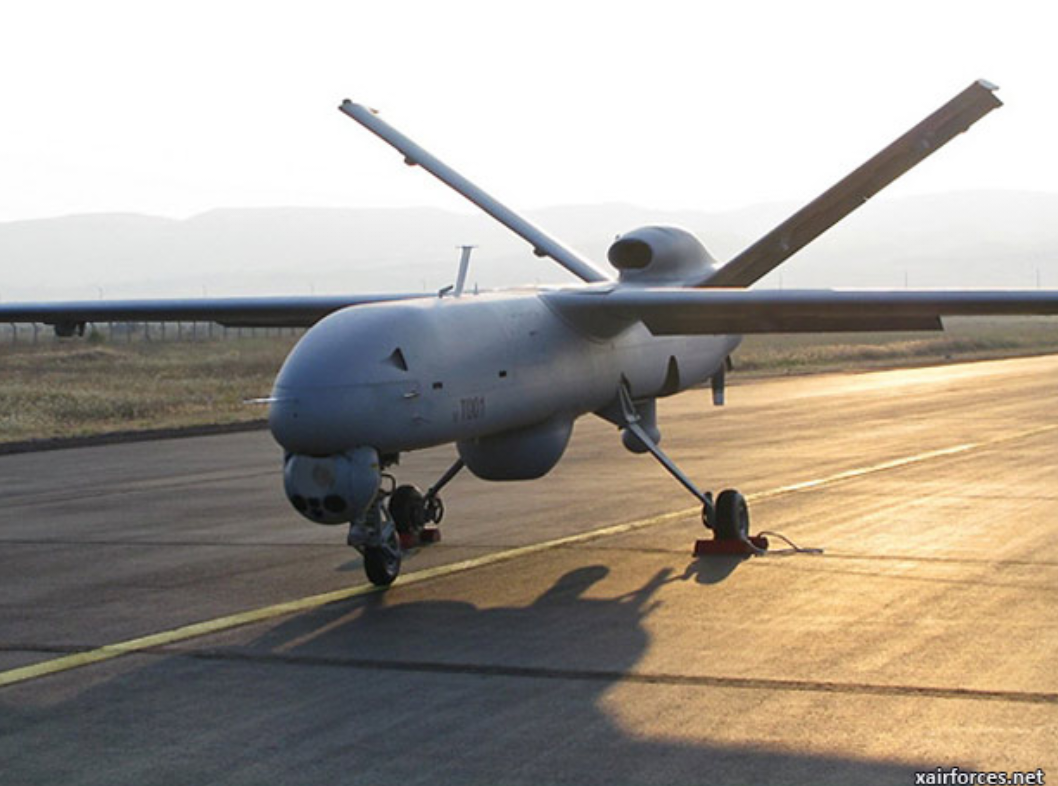 |
| Egyptian Air Force Anka UAV. |
The Anka follows conventional UAV design and basic aircraft fundamentals to achieve a modern, sleek look. The design is characterized by its tubular fuselage which houses avionics, fuel and the engine. The turbocharged engine is fitted aft and powers a three-bladed propeller in a “pusher” configuration.
A pair of outward canted vertical tail fins are situated to either side of the engine housing. The main wing assemblies are fitted at amidships and are high-mounted onto the top of the fuselage spine. These are straight assemblies with clipped wingtips. The nose cone of the Anka is well curved for a smooth aerodynamic appearance.
Under the nose is the optics package housed within a revolving blister. There is another fuselage bulge at amidships under the fuselage though this appears to be an optional fitting. The undercarriage is a tricycle design with two main landing gear legs and a nose leg.
All are completely retractable into the Anka design which also promotes strong aerodynamic qualities at speed. All told, the Anka is a very large beast, its size more akin to a small jet trainer, and requires a crew of ground personnel to move into position.
The base, unarmed Anka provides the Egyptian Air Force with surveillance, patrol, target tracking, identification and designation capability and is appropriately equipped with various optics, cameras and sensors for the role.
The system can take-off and land autonomously and personnel based at the ground control station manage the other functions as required. This drone can stay aloft for 24 hours at 30,000 feet and has an operational radius of 200 km.
SOUTH AFRICA.
BATELEUR MALE (medium altitude long endurance )UAV.
Origin: South Africa.
Until recently South Africa was Africa’s biggest economy. On a per capital basis the rainbow nation remain on top in quality of life. The country has by far the best infrastructure, on par with those of Western Europe.
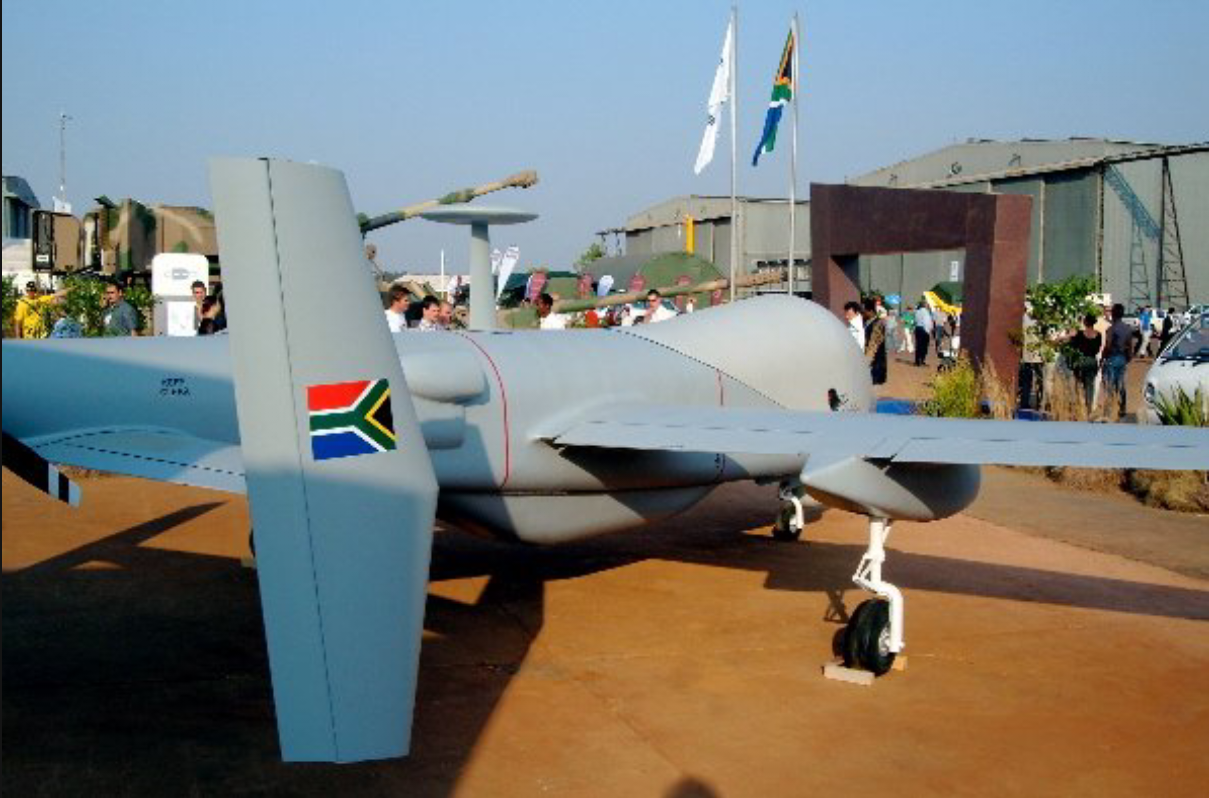 |
| South Africa’s BATELEUR MALE UAV at an aircraft exhibition in Johannesburg. |
Militarily, according to the global military fire power index, the South African military is ranked 5th in Africa, behind Egypt, Algeria, Ethiopia and Nigeria. It is the most technologically advanced nation in Africa. The country once had nuclear weapons, but voluntarily dismantled its nuclear arsenal.
The Denel Dynamics Bateleur is categorized as a “Medium-Altitude, Long-Endurance (MALE) Unmanned Aerial Vehicle (UAV)” and is comparable in scope to the American General Atomics MQ-1 “Predator-A” series of UAVs.
It is conventionally powered by a propeller engine and intended for unarmed reconnoiter and surveillance. Origins of the Bateleur UAV program arose in 2003 to which the program was formally given life in 2004 as a private venture by Denel (more specifically Denel Dynamics, formerly Kentron, with Kentron now a division of Denel Ltd - the South African government-owned defense concern).
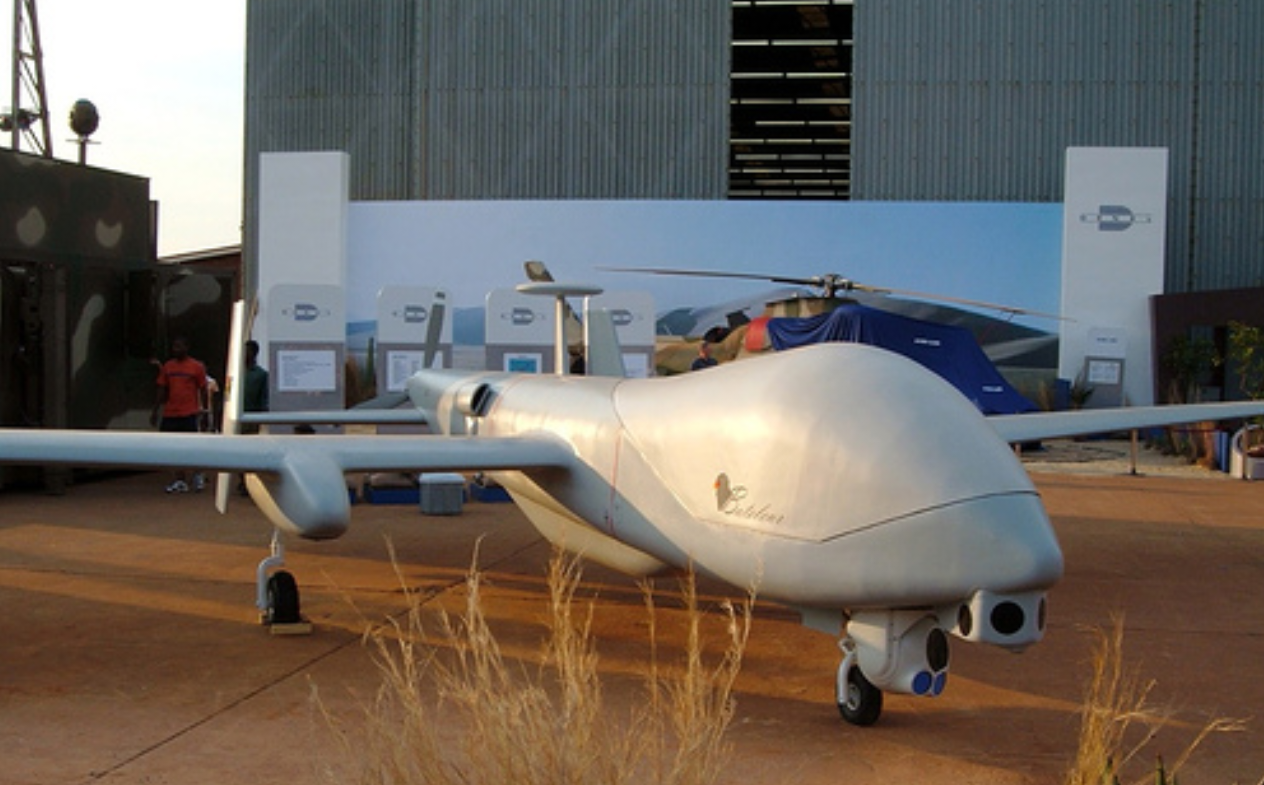 |
| South Africa’s BATELEUR MALE UAV at an aircraft exhibition in Johannesburg. |
As such, the design scope of the Bateleur was rather broad in its goals for no direct military requirement was handed down by the South African military.
While not armed in any way, UAVs such as the Bateleur fulfill various important battlefield roles as needed that go beyond basic reconnaissance of the enemy.
This can, and most likely will, include acting as a communications relay, assistance in search and rescue missions, spotting for artillery support, laser designation of ground targets and basic patrol (including maritime) among others.
Of course the targeted partner is the South African military but hopes are also pegged on overseas export sales to interested buyers such as Brazil.
For South Africa, modern UAVs could play a large role in countering growing piracy and smuggling concerns as well as be useful in managing the country’s vast coastline. Its mission payload will consist largely of cameras (electro-optical and infrared).
A laser rangefinder will be an optional installation in the final product offering and a laser designator will also be worked into the payload mix. Maximum payload weight totals will be in the vicinity of 440lbs.
The fuselage will be designed as modular so the system can be broken down in time and transported as multiple components with relative ease. Power is expected to come from a conventional 4-cylinder engine of 115 horsepower.
The Bateleur is designed as a rather conventional UAV by modern standards and characterized by a large nose assembly housing the optics and sensor suites as well as avionics.
The fuselage is well contoured and relatively featureless save for a few inlets and access panels. Optics hang from rotating installations under the nose of the aircraft. Wings are straight in their design and mid-mounted along the fuselage sides.
The empennage sports horizontal tail planes supporting a pair of vertical tail fins. The engine is fitted to the extreme rear of the fuselage and powers a three-bladed propeller system set between these two vertical tail fins.
The undercarriage is of the conventional tricycle arrangement with all single-wheeled legs - a pair of main landing gear legs and a nose leg. The main legs retract into nacelles found under each wing element. The nose leg is situated directly underneath the nose of the aircraft.
The Bateleur will be designed as a completely autonomous UAV meaning that, utilizing GPS-based navigation, the UAV will be able to manage preset in-flight waypoints on its own.
The autopilot system will be such that the Bateleur will also be able to take-off and land without human interaction. Its wheeled undercarriage will require use of a prepared runaway unlike other smaller-class catapult/hand-launched, net-recoverable UAVs now in use.
This limits the Bateleur in a tactical sense but its size precludes it from being launched/retrieved by any other means.
A full scale mock up of the Bateleur was unveiled at Africa Aerospace and Defense 2004 (AAD2004) at Air Force Base Waterkloof, marking the official “arrival” of the Bateleur UAV program in the process.
For a mock up, the system actually looked as though a completed prototype. First flight was expected sometime in 2006 but, as of this writing, the event has yet to take place, meaning large delays in its development are most likely the cause.
The South African Air Force does intend on acquiring a medium-class UAV of some sort in the near future but the procurement cost of a single Bateleur might force it hand at acquiring a less-expensive, foreign alternative to the indigenous in-house design.
While still in development, Denel confirms a few performance specifications of their Bateleur UAV and these include a mission endurance time of up to 24 hours with an operational range of approximately 500 kilometers. Its maximum service ceiling is expected to range within 25,000 feet with a cruising speed of 250 kilometers per hour.
Incidentally, the name of “Bateleur” is in reference to the eagle species common to central and southern Africa.
SEEKER 400
ORIGIN: SOUTH AFRICA.
Dennels SEEKER 400 armed drone bears testament to the fact that South Africa does lead the continent in advanced technology. This drone features the Mokopa anti-tank missile, developed by Denel Dynamics.
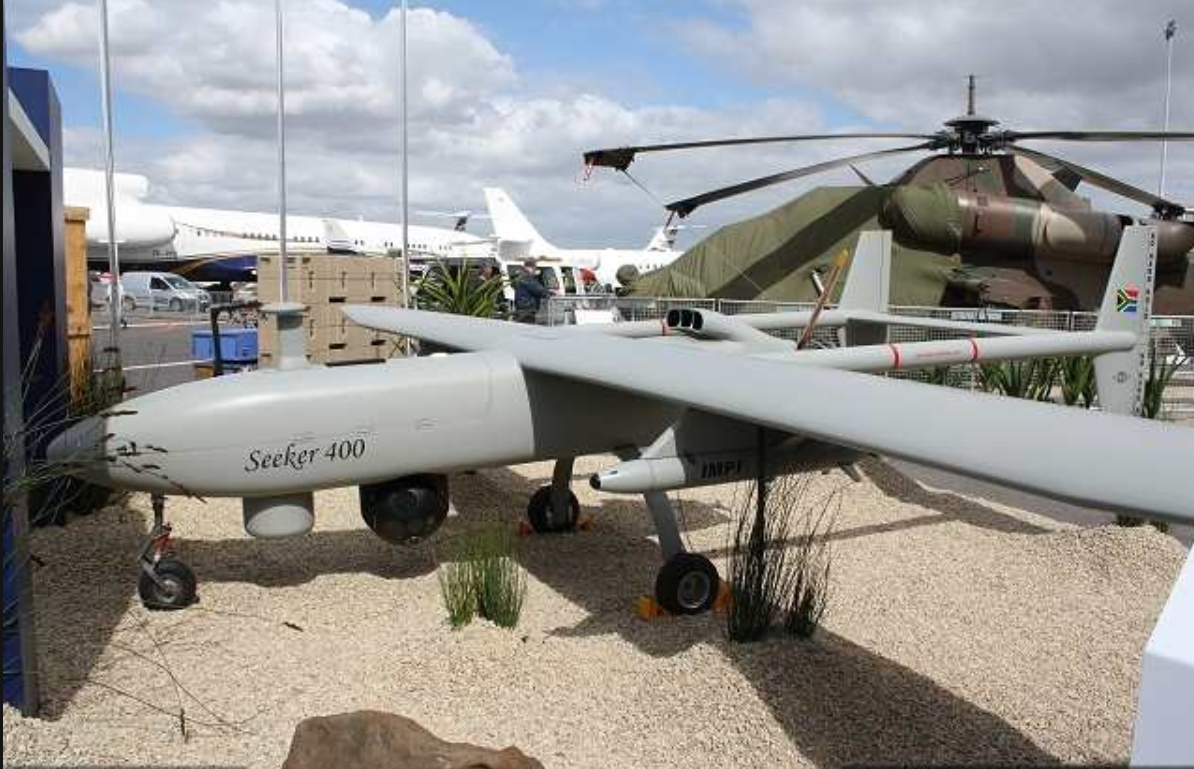 |
| Denel Dynamics SE-400 at a South African aircraft exhibition. |
The SEEKER 400 has a cruising speed of 500 kph, an operational radius of 500km and stay airborne for 16 hours, given it an unmatched “loiter and strike” mission capability.
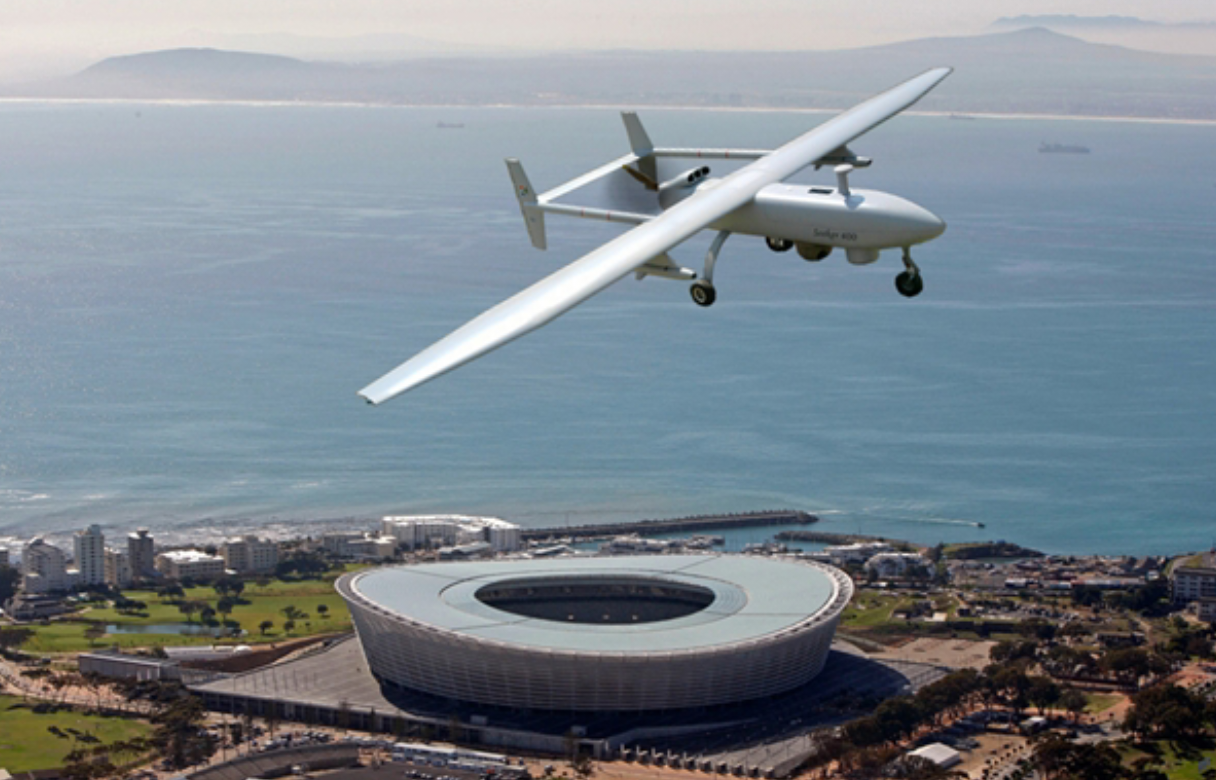 |
| SAAF SE-400 flies over a football stadium in Cape Town. |
NIGERIA
Gulma drone: Made-in-Nigeria
Biggest population, biggest economy.Nigeria is the the technological powerhouse in West Africa, hence it is no surprise it is at the forefront in technological innovation and prowess in Africa.
Late comers to the game after 40 wasteful years of military dictatorship, the country is catching up to the King of the South at breakneck speed.
GULMA TACTICAL UAV.
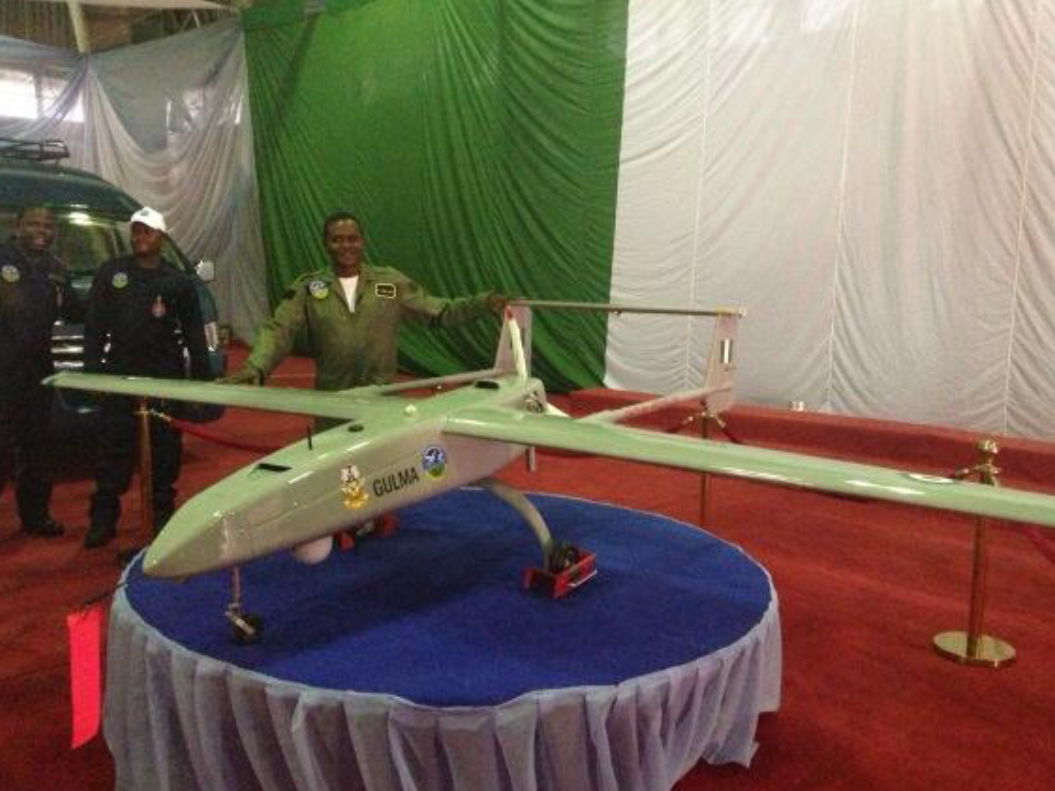 |
| Nigeria unveils the export version of the GULMA Reconnaissance UAV. |
 |
Air Force engineer working on a GULMA UAE.
|
AMEBO UAV
 |
| AMEBO UAV. Nigeria’s second indegenously produced drone. |
CH-3 RAINBOW
Origin: CHINA
Nigeria purchased five CH-3 attack drones from China, along with YC-200 guided bombs and AR-1 air to ground missile in a secrete deal.
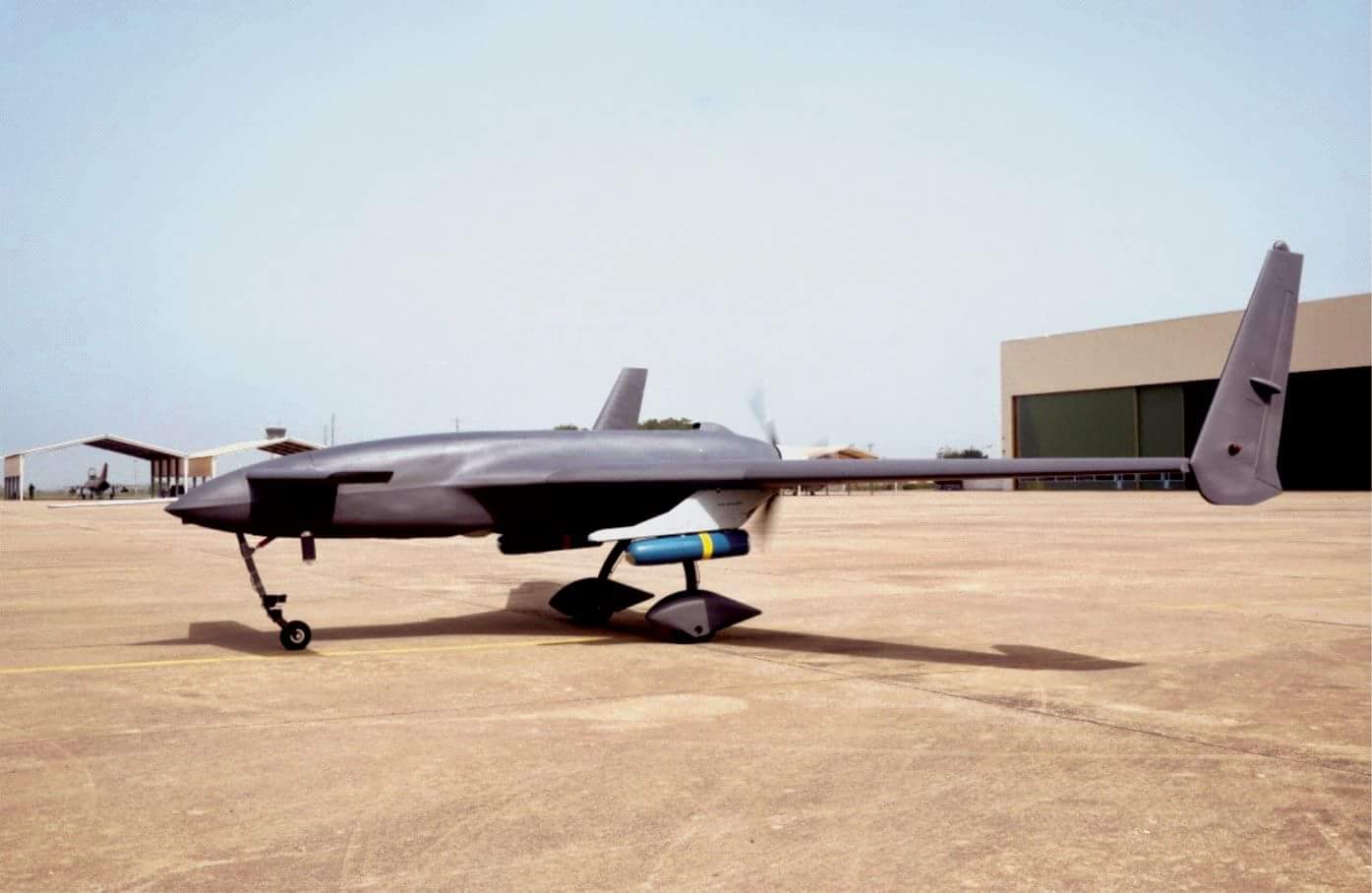 |
| A NAF CH-3 Rainbow attack drone a complement of Chinese air to ground missile sits outside an aircraft hanger. |
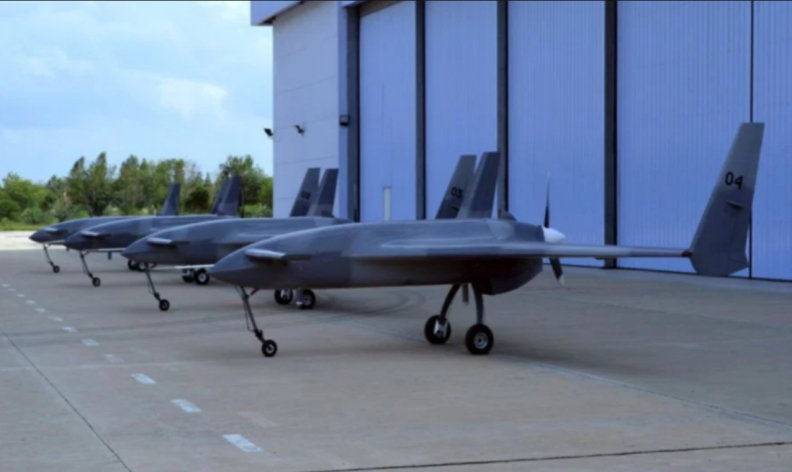 |
| Four CH-3 Rainbow drones assigned to the NAF Reconnaissance Squadron. |
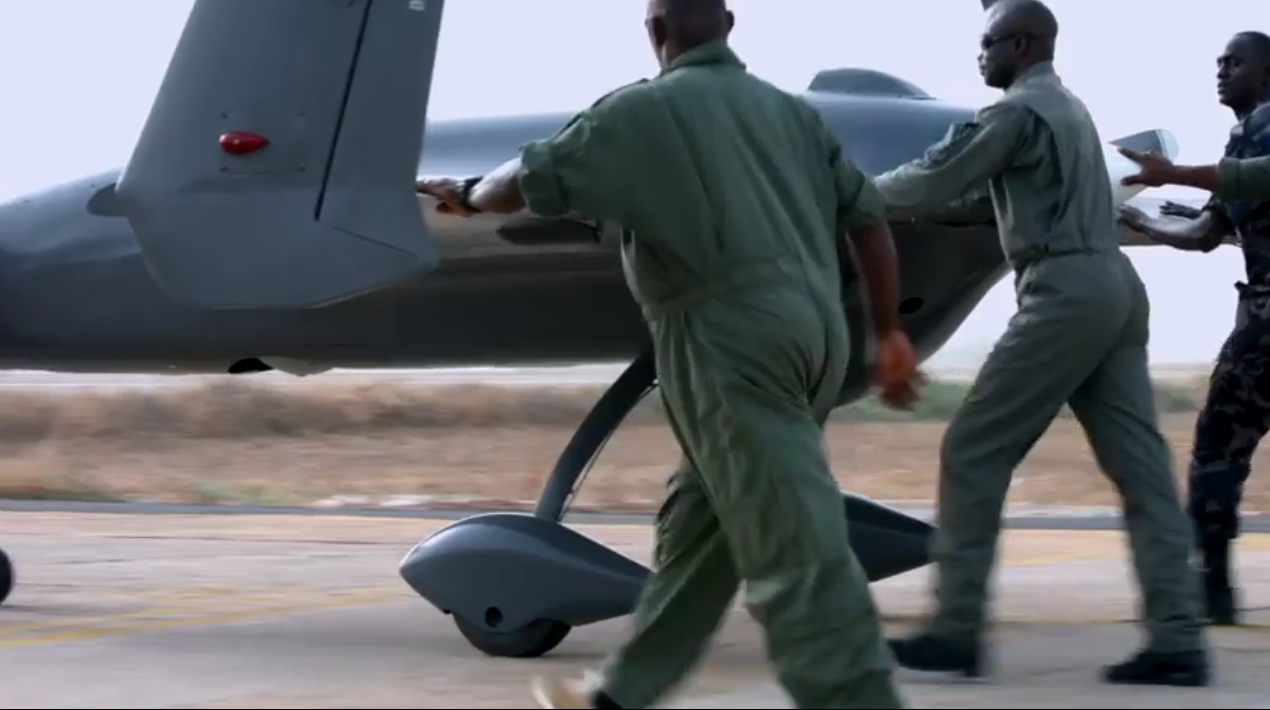 |
| Air Force crew preparing the CH-3 UCAV for take off on a strike mission. |
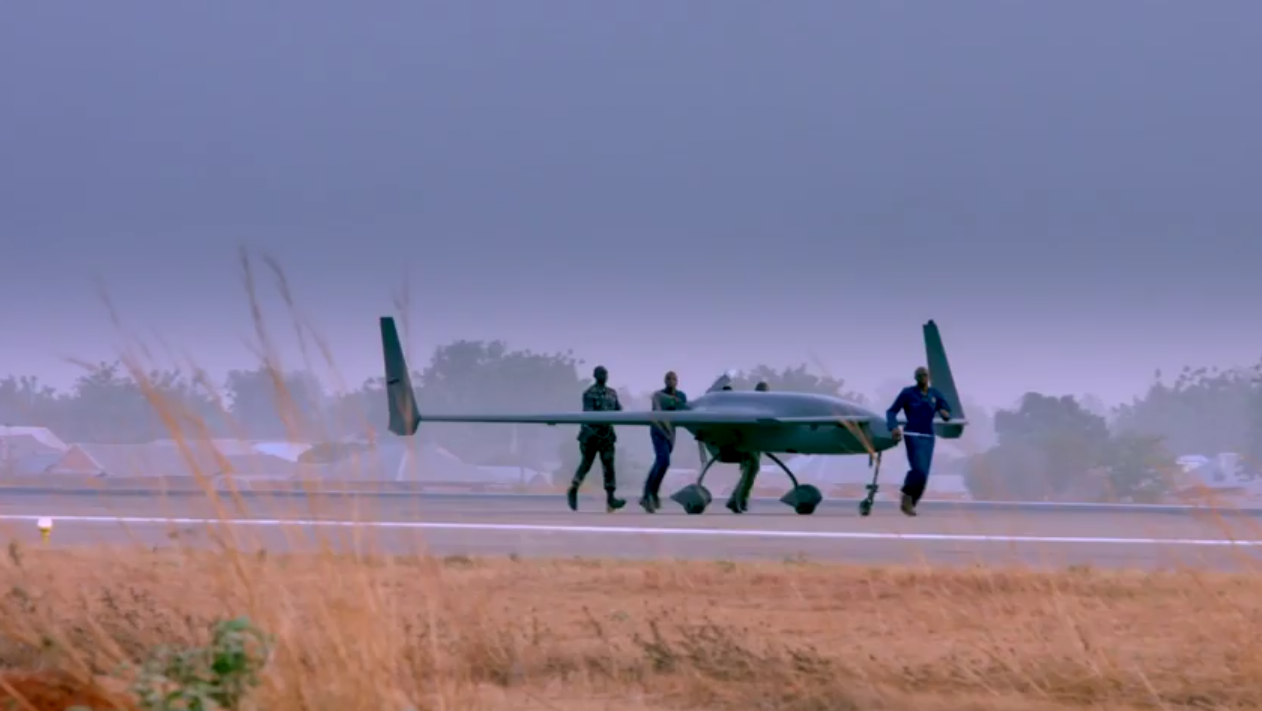 |
| Air Force crew preparing the CH-3 UCAV for take off on a strike mission. |
Externally, the CH-3 carries swept-back wing mainplanes along a streamlined fuselage that sports forward canards for additional stability and control. The mainplanes showcase large vertical fins (“winglets”) at their tips and sport a single hardpoint each for the carrying and delivery of guided-missile ordnance.
The undercarriage is wheeled, though fixed, under the aircraft’s mass. At the rear of the fuselage is the engine installation which drives a three-bladed propeller unit in a “pusher” arrangement. Specifications include a wingspan of 8 meters while performance displays a 12-hour endurance window with a payload maximum of 80 kilograms. Range is 2,400 kilometers.
This article originally appeared at DefenseNigeria.blog

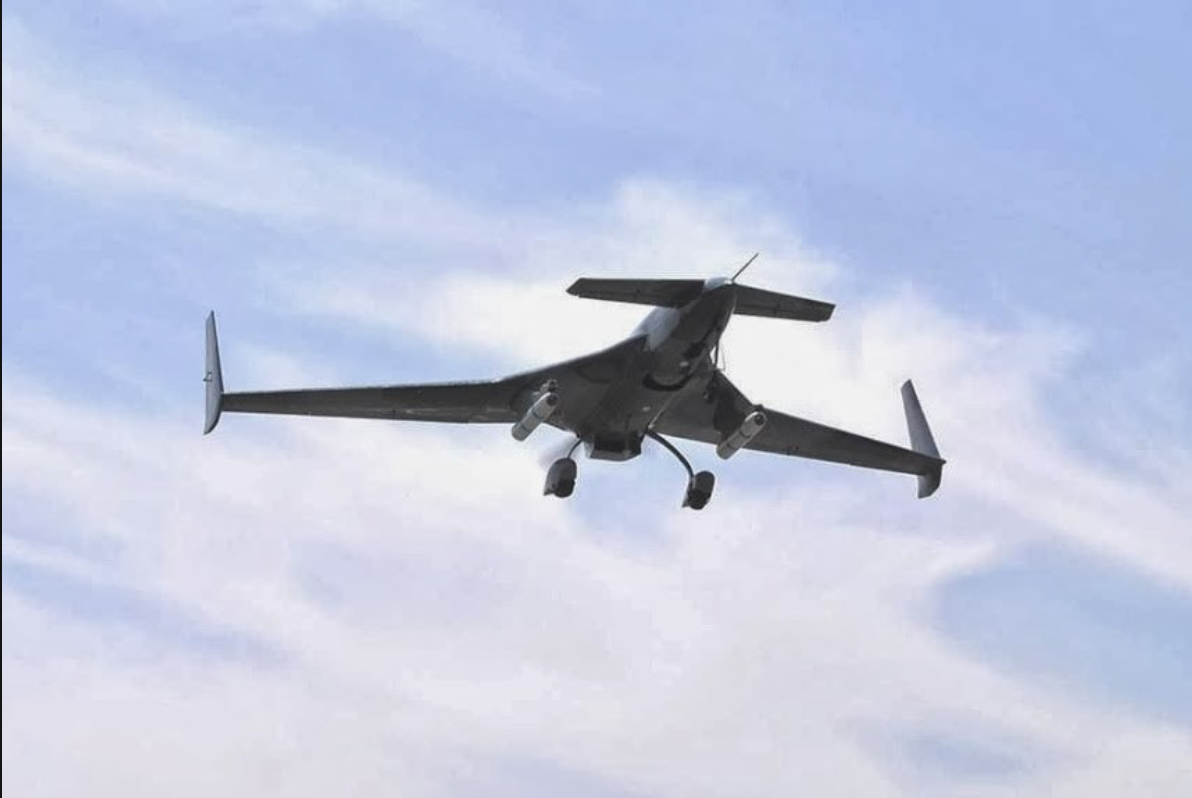

No comments:
Please share your views with us... We love to hear from you!